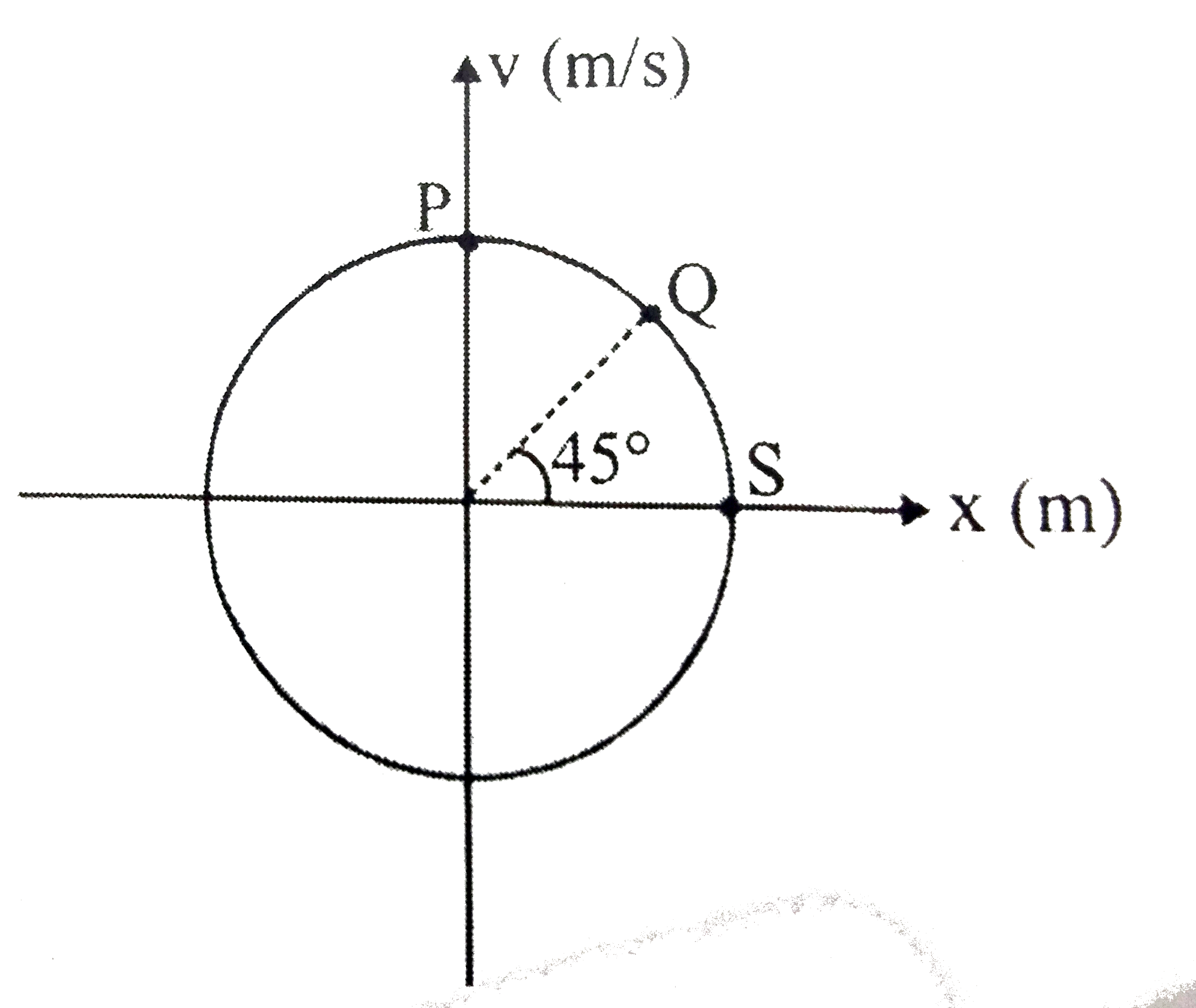A particle is moving along x-axis. Its velocity v with x co-ordinate is varying as v=√x. Then
initial velocity of particle is zero
motion is non-uniformly accelerated
acceleration of particle at x=2m is 12m/s2
acceleration of particle at x=4m is 1m/s2
The correct Answer is:A, C
To solve the problem step by step, we will analyze the given information and derive the necessary conclusions.
Step 1: Understand the relationship between velocity and position
The velocity of the particle is given by the equation:
v=√x
This indicates that the velocity depends on the position x.
Step 2: Determine the initial velocity
When x=0:
v=√0=0
Thus, the initial velocity of the particle is zero.
Step 3: Find the acceleration
Acceleration a can be expressed in terms of velocity and position using the chain rule:
a=dvdt=dvdx⋅dxdt=v⋅dvdx
Substituting v=√x:
a=√x⋅dvdx
Step 4: Calculate dvdx
To find dvdx, we differentiate v=√x:
dvdx=12√x
Step 5: Substitute dvdx back into the acceleration equation
Now substituting dvdx into the acceleration equation:
a=√x⋅12√x=12 m/s2
Step 6: Analyze the motion
Since the acceleration a=12 m/s2 is constant, the motion is uniformly accelerated.
Step 7: Calculate acceleration at specific positions
- At x=2 m:
a=12 m/s2
- At x=4 m:
a=12 m/s2
Conclusion
1. The initial velocity of the particle is zero.
2. The motion is uniformly accelerated.
3. The acceleration of the particle at x=2 m is 12 m/s2.
4. The acceleration of the particle at x=4 m is also 12 m/s2, not 1 m/s2.
Summary of Options
- Option A: Correct (initial velocity is zero)
- Option B: Incorrect (motion is uniformly accelerated)
- Option C: Correct (acceleration at x=2 m is 12 m/s2)
- Option D: Incorrect (acceleration at x=4 m is 12 m/s2)
The velocity of the particle is given by the equation:
v=√x
This indicates that the velocity depends on the position x.
When x=0:
v=√0=0
Thus, the initial velocity of the particle is zero.
Acceleration a can be expressed in terms of velocity and position using the chain rule:
a=dvdt=dvdx⋅dxdt=v⋅dvdx
Substituting v=√x:
a=√x⋅dvdx
To find dvdx, we differentiate v=√x:
dvdx=12√x
Now substituting dvdx into the acceleration equation:
a=√x⋅12√x=12 m/s2
Since the acceleration a=12 m/s2 is constant, the motion is uniformly accelerated.
- At x=2 m:
a=12 m/s2
- At x=4 m:
a=12 m/s2
1. The initial velocity of the particle is zero.
2. The motion is uniformly accelerated.
3. The acceleration of the particle at x=2 m is 12 m/s2.
4. The acceleration of the particle at x=4 m is also 12 m/s2, not 1 m/s2.
- Option A: Correct (initial velocity is zero)
- Option B: Incorrect (motion is uniformly accelerated)
- Option C: Correct (acceleration at x=2 m is 12 m/s2)
- Option D: Incorrect (acceleration at x=4 m is 12 m/s2)
Topper's Solved these Questions
- KINEMATICS 1BOOK - DC PANDEY ENGLISHCHAPTER - KINEMATICS 1EXERCISE - COMPREHENSION_TYPE
19 Videos
- KINEMATICS 1BOOK - DC PANDEY ENGLISHCHAPTER - KINEMATICS 1EXERCISE - MATCH THE COLUMN
10 Videos
- KINEMATICS 1BOOK - DC PANDEY ENGLISHCHAPTER - KINEMATICS 1EXERCISE - INTEGER_TYPE
15 Videos
- KINEMATICSBOOK - DC PANDEY ENGLISHCHAPTER - KINEMATICSEXERCISE - INTEGER_TYPE
10 Videos
- LAWS OF MOTIONBOOK - DC PANDEY ENGLISHCHAPTER - LAWS OF MOTIONEXERCISE - Medical entrances gallery
39 Videos
Similar Questions
A particle is moving along x-axis such that its velocity varies with time according to v=(3m/s2)t−(2m/s3)t2. Find the velocity at t = 1 s and average velocity of the particle for the interval t = 0 to t = 5 s.
View SolutionA particle of unit mass is moving along x-axis. The velocity of particle varies with position x as v(x). =αx−β (where α and β are positive constants and x>0 ). The acceleration of the particle as a function of x is given as
View SolutionA particle moves along x - axis in such a way that its x - co - ordinate varies with time according to the equation x=4−2t+t2. The speed of the particle will vary with time as
View SolutionA particle is moving in x-y plane with its x and y co-ordinates varying with time as, x=2tandy=10t−16t2. Find trajectory of the particle.
View SolutionA time varying force, F=2t is acting on a particle of mass 2kg moving along x-axis. velocity of the particle is 4m/s along negative x-axis at time t=0. Find the velocity of the particle at the end of 4s.
View SolutionA particle is in motion on the x-axis. The variation ofits velocity with position is as shown. The graph is circle and its equation is x2+v2=1, where x is in m and v in m/s. The correct statement(s) is/are:-

View SolutionThe position of a particle moving along x-axis varies with time t according to equation x=√3sinωt−cosωt where ω is constants. Find the region in which the particle is confined.
View SolutionA particle is moving along x-axis under the action of a force, F which varies with its position (x) as F∝x−1/4. The variation of power due to this force with x is
View SolutionA particle of mass 1 kg is moving along x - axis and a force F is also acting along x -axis in such a way that its displacement is varying as : x=3t2. Find work done by force F when it will move 2m.
View SolutionA particle located at x=0 at time t=0, starts moving along with the positive x−direction with a velocity 'v' that varies as v=a√x. The displacement of the particle varies with time as
View Solution
